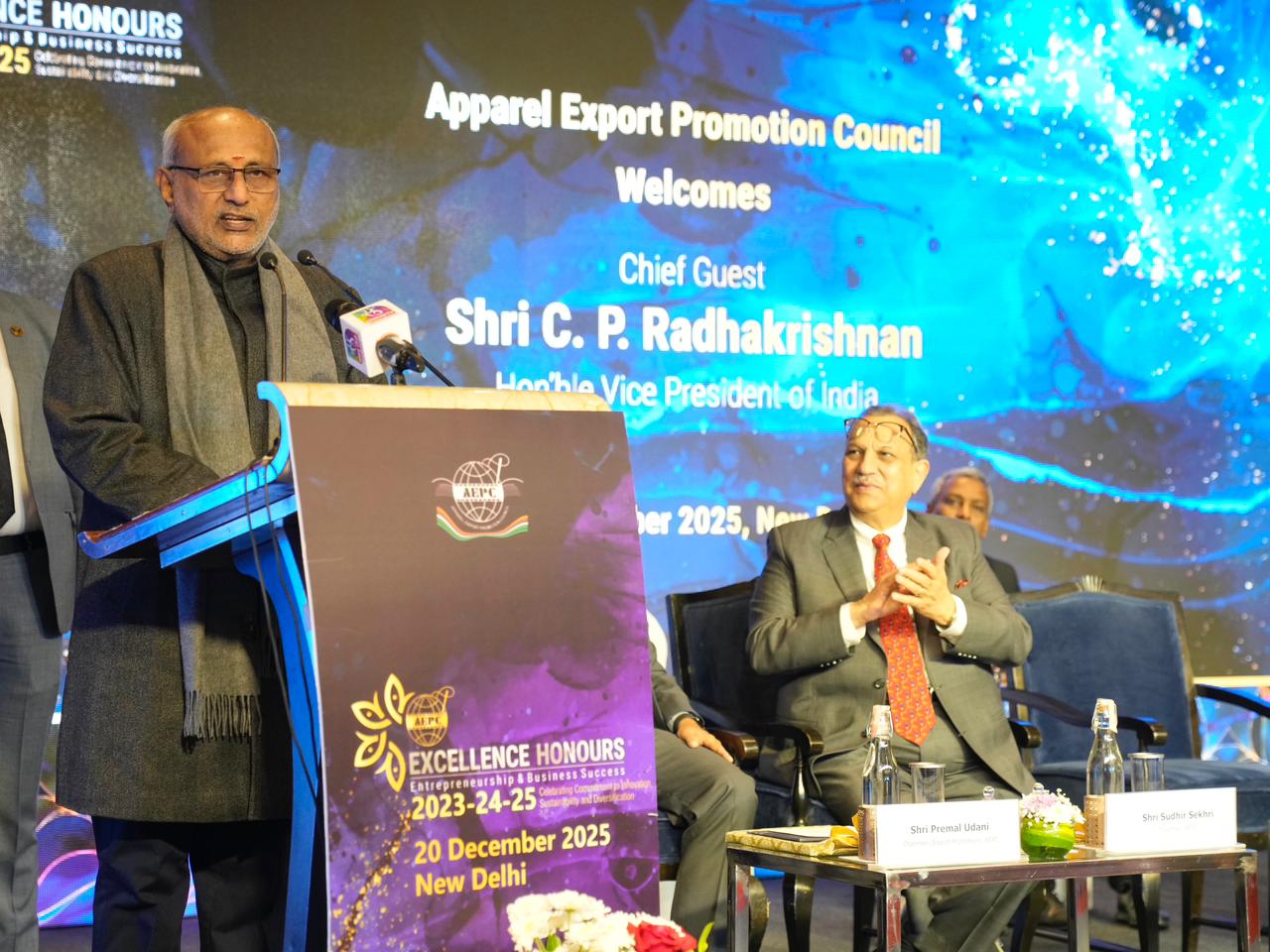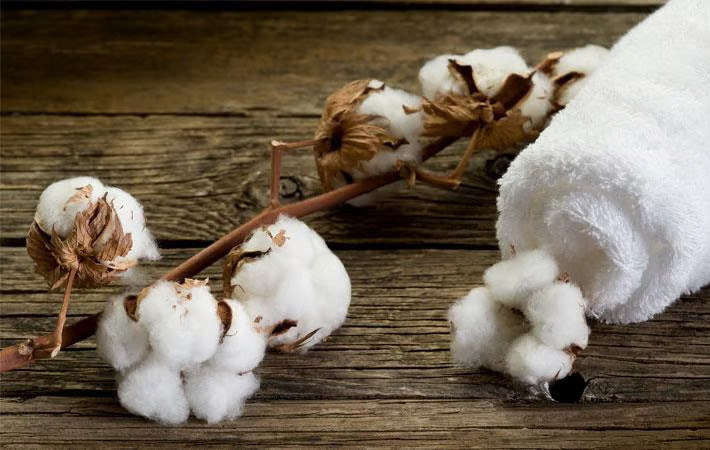FW
Since fiscal ’09 growth in production of both cotton cloth and cotton yarn in Pakistan has been negligible. Over the last three years, cotton yarn production has moved with an annual average increase of one per cent. Cotton cloth production has followed a similarly pattern with an average growth rate of 0.23 per cent.
The production of cotton cloth in fiscal ’18 is estimated to be 3.42 million tons while cotton yarn output might stand at 1.05 billion square meters. This would translate into zero increase in production of what are undeniably key inputs in the textile value chain.
Textile players in the spinning and weaving segments expect little to no growth in full year production numbers of cotton cloth and cotton yarn. The rising cost of production has been a bane for spinning and weaving mills. This has been particularly true for smaller players in these sectors. Almost 35 per cent of the total conversion cost in the textile value chain is energy but the electricity and gas tariffs being charged from the domestic industry are the highest in the region. More than 100 textile companies have shut down completely because of the challenging business environment in the country.
Bangladesh’s exports were up 13.53 per cent year-on-year, helped by steady shipments of garment products. The amount, which beat the monthly target by 1.65 per cent, is lesser than the previous month’s by 6.94 per cent. Export earnings in the first eight months of the year increased by 7.39 per cent.
Garment receipts, which typically account to more than 80 per cent of export receipts, were up 16.59 per cent year-on-year but down 3.7 per cent month-on-month. Buyers have started placing higher volumes of work orders. The country’s apparel exports are rebounding because of western retailers’ regaining confidence in the Made in Bangladesh brand.
Nearly 90 per cent of the remediation works for ensuring structural, fire and electrical safety in the factories are done. As a result, the image of the sector has brightened. Besides, Bangladesh has the highest concentration of green factories in the world. Currently, 67 such factories are in operation and 280 are under construction. Such green initiatives have helped in winning back buyers’ confidence.
Moreover, Bangladeshi manufacturers have started to manufacture high-value garment items. Machinery upgrade is another reason for higher production and export of goods. Shipments to new destinations like Japan and South America have also increased.
“GST is a great initiative. A single tax has subsumed other taxes,’ says H K L Magu, Chairman, AEPC, praising the government’s efforts and adds, “But there were problems in implementation. Exporters suffered since their funds were blocked and they were unable to pay suppliers on time. Suppliers don’t give advance, since they can’t carry them forward for an indefinite period.”
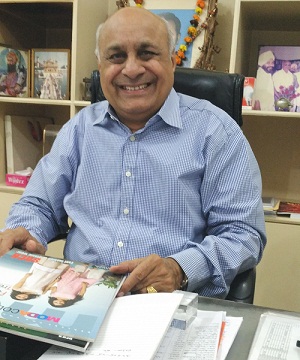
“GST is a great initiative. A single tax has subsumed other taxes,’ says H K L Magu, Chairman, AEPC, praising the government’s efforts and adds, “But there were problems in implementation. Exporters suffered since their funds were blocked and they were unable to pay suppliers on time. Suppliers don’t give advance, since they can’t carry them forward for an indefinite period.”
Exports in September 2017 rose almost 40 per cent because of the special package. “GST Council assured us refunds within seven days. Exporters were told they would get 90 per cent of the refund within seven days. However, for July, August, and September, there were no refunds. Given this scenario, buyers had no choice but to look for other options like Bangladesh, Vietnam and Cambodia,” he explains. Since competitors like Bangladesh and Cambodia already have an FTA with the EU, buyers chose them over India. He points out, “When China vacated the space due to higher cost of production orders were diverted from China to India. But we could not seize the opportunity.”
Dipping exports, a cause of concern
Talking about India’s dipping apparel exports, Magu observes, “Exports started falling in October by 41 per cent. In November, the decline was 14 per cent while December recorded 13 per cent decline and January saw a 14 per cent dip. There has been a month to month decline in apparel productivity.” From a plus 1.3 per cent in April, 2017, May saw a fall of five per cent; June the decline was 3.2 per cent while in July, it was 5.1 per cent. August, September, October, November and December recorded 6.4 per cent, 7.2 per cent, 11 per cent, 13.1 per cent, 13.5 per cent dip respectively. “Overall the dip in production from May to December has been 10.4 per cent. Owing to this, we can’t meet our export target of $20 billion. We will be lucky to do what we did last year. Last year, we clocked in almost $17 billion. However, once refunds start flowing, things will improve. Moreover, free trade agreements will help boost our exports,” he feels.
A challenging scenario
Magu points out clothing will always be in demand much like food and housing. But there are times when main buyers reduce their inventories because once the season ends they have to sell the stock at discounted prices. “Indeed, business is there but buyers want fast track suppliers. Fast fashion dictates trends. Indian exporters don’t have a great infrastructure and most can’t supply in a short span of time. But China has great production abilities and huge capacities. They can cater to any order, however big, within a specified time while we depend on fabric availability.” He emphasizes while India is good in value addition, embroidery, lace work we are not very competitive in basic items. That’s why India’s exports to the world are not growing.
Speaking about the challenges the industry is facing today, Magu says, no company in the country is showing a profit of more than five per cent as interest costs are high. “The interest subvention that they get are not good enough. There is a need for cut in interest rates.” Moreover, ports in India are not very efficient. In Bangladesh and Sri Lanka, the cargo is taken a day before the ship leaves while in India the cargo is taken seven days earlier. A cargo from Delhi to Mumbai takes three days to move. In Germany, one can do 1,200 km in 15 hours. “We have to wait 40 days for fabrics to come from China. So, we can’t meet the 45 days delivery window. That’s the reason factories lie idle from May to September. For five months, there is no business. Indeed, there are markets like South America and South Africa but their imports are not so high. AEPC sends delegations to these markets and business is gradually improving,” he adds.
Textile 4.0 to boost production
He feels, there is still some time for Textile 4.0 to spread out in India but when it does happen the industry will adapt. “We can take up the challenge. Productivity will increase. We can grow only if we have the technology with us. 4.0 will enhance quality standards and we can do fast deliveries and small orders,” he sums up.
Ternua has chosen to work with Lectra Fashion PLM 4.0. This solution helps companies digitalize their supply chain. It connects all teams involved in the design-to-production process, regardless of geographic location. Team members will also be able to communicate better with external suppliers, access accurate information and keep track of every collection’s development progress. The group can hence speed up the entire production process and help their brands deliver their collections to markets all over the world on time.
Ternua is a Spanish outdoor clothing and sportswear group. Founded in 1994, the group has achieved worldwide success by promoting adventure through respect for nature, producing sustainable technical clothing for outdoor sports enthusiasts worldwide. The group’s strong commitment to the environment is shown through its R&D that focuses on developing its own fabric by using eco-friendly materials such as organic cotton and recycled down. Ternua manages its design and product development processes in-house but outsources production.
Lectra, founded in 1973, is the technological partner for companies using fabrics and leather. Among its clients are car interior and furniture companies. Fashion PLM 4.0 has the ability to fully integrate all processes and improve communication and teamwork across all departments through sound data management.
For the third quarter of fiscal 2018, Ralph Lauren’s gross profit margin was 60.7 per cent. The gross margin increase was driven by initiatives to improve quality of sales through reduced promotional activity, favorable geographic and channel mix shifts, and improved product costs.
Revenue decreased by four per cent on a reported basis and was down six per cent in constant currency, driven by initiatives to increase quality of sales, reduce promotional activity, and elevate distribution, as well as brand exits and lower consumer demand.
Operating income declined one per cent to the prior year period and operating margin was 13.2 per cent, excluding restructuring-related and other charges from both periods. The brand is celebrating its 50th anniversary. Focused execution on key initiatives, especially during the important holiday period, delivered better-than-expected results for the third quarter as the company drove lower discounting and better quality of sales overall. Now the focus is on returning to industry-leading revenue and earnings growth.
In the fourth quarter of 2018, the company expects net revenue to be down by eight or ten per cent, excluding the impact of foreign currency. It continues to hope net revenue to decrease by eight or nine per cent for 2018, excluding the impact of foreign currency.
The VDMA textile machinery conference will be held in Mumbai on May 15 and 16, 2018. This will be attended by decision-makers from the Indian textile and nonwoven industry. More than 30 VDMA textile machinery and component manufacturers will hold 36 application-oriented presentations about spinning, knitting, weaving, finishing, dyeing and embroidery. Other important cross topics, such as automation, digitalization and smart production technologies, will show Indian textile manufacturers how to improve their competitiveness.
State-of-the-art-technology will be presented in three sessions: Textile machinery and components for the fiber and yarn industry, for the technical textiles and nonwovens industry and for the apparel, home textile and carpet industry.
In 2013, more than 270 decision-makers and technical management of Indian textile manufacturers participated in the VDMA conference. VDMA is the German textile machinery association. Germany is a leading supplier of textile machinery. German textile machinery is characterized by its high quality and customer-specific production. Among Germany’s textile machinery exports, spinning machinery takes top place. This is followed by knitting and hosiery machinery, finishing machinery and weaving machinery. German textile machinery helps textile manufacturers interested in digitization, developing and manufacturing new products, enhancing competitiveness by increasing efficiency and quality, and saving energy and material resources.
Intertextile Shanghai Home Textiles will be held from March 14 to 16, 2018. This is an opportunity to source home textile finished products. More than 200 exhibitors will showcase products including beds and towels, table and kitchen linen, machinery and technology, design and styling and more.
The sewing equipment pavilion will feature some of the most advanced and efficient textile solutions such as automated production lines, smart logistic systems and computerised embroidery machines.
The fair stands out as the leading trading event for finished products in China as it is held during the country’s peak sourcing time for such products including duvets, pillows, bedding and towels. The fair accommodates the foremost bedding companies in China as well as distributors of overseas brands, providing buyers with a range of quality products.
The Chinese towelling market in particular has been thriving recently, with consumers paying more attention to the material, quality, function and different uses of towels. There has been a steady growth in demand for finished products in China. In the first quarter of 2016 domestic sales of towels and bedding products increased 8.1 per cent and 6.8 per cent compared to the first quarter of 2015.
With Chinese consumers’ disposable income rising steadily, demand for quality home textile products is continuing to grow.
The US wants India to lower trade barriers, saying this would lower prices to consumers and promote the development of value chains in India. India has increased customs duties on dozens of products to help its flagship Make-in-India drive. The country says major economies, including the US and China, follow protectionist policies.
Under US pressure, which said there were zero duties for Indian bikes sold in the United States, India cut duties on Harley-Davidson motorbikes to 50 per cent from 75 per cent. India imposed a higher import tax on electronics products such as mobile phones and television sets in December, and then on 40 more items in the budget last month. These included goods as varied as sunglasses, juices and auto components.
The move is aimed at giving local industry the chance to grow and is part of a broader plan to lift the share of manufacturing in GDP from around 15 per cent to a quarter and create the tens of thousands of jobs needed for a young workforce. Even before the new round of hikes, India has been seen as one of the most protected major economies. The United States had an average tariff rate of 3.4 per cent on imported goods in 2016 compared with 13.5 per cent for India.
"To keep the growth wheels moving, countries need to rethink their strategies. And Cambodia is no different. After graduating from the Least Developed Country status in July 2016, Cambodia’s economy has remained healthy with a GDP growth of 6.9 per cent in 2017. Growth was driven by the recovering tourism sector, the ongoing construction boom and the gradual emergence of non-textile exports. Stats point reveal during the first 10 months of 2017, Cambodia received 4.3 million international tourists, which is up 10.4 per cent compared with the same period in 2016."
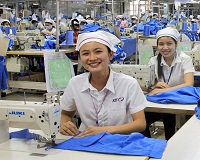
To keep the growth wheels moving, countries need to rethink their strategies. And Cambodia is no different. After graduating from the Least Developed Country status in July 2016, Cambodia’s economy has remained healthy with a GDP growth of 6.9 per cent in 2017. Growth was driven by the recovering tourism sector, the ongoing construction boom and the gradual emergence of non-textile exports. Stats point reveal during the first 10 months of 2017, Cambodia received 4.3 million international tourists, which is up 10.4 per cent compared with the same period in 2016. This was partly due to newly-established direct regional flights as well as government initiatives to boost arrivals.
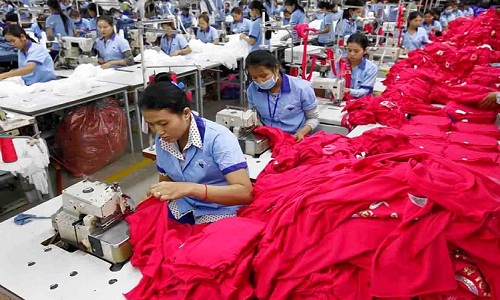
The construction sector has kept the momentum going with investment during the first 10 months of the year reaching $6.26 billion, a 27 per cent increase over the same period in 2016. This was followed by exports of machinery and auto parts. The number of factories dedicated to electrical machinery and auto parts increased from 46 in 2012 (5.1 per cent of manufacturing) to 121 in 2017 (7.1 per cent of manufacturing).
Decelerating growth in textile
On the contrary, growth in clothing and other textile exports decelerated to 5.4 per cent in the first half of 2017, compared with the 8.4 per cent growth rate in 2016. Textile exports have also eased in volume terms to a growth rate of 3.6 per cent in 2017, which is down from 2016’s figure of 12.3 per cent. The slowdown is result of a decrease in productivity, an increasingly competitive global market, the high cost of transportation and energy as well as rising labour costs. The minimum wage for the garment and footwear sector is $153 a month and will increase to $170 a month in 2018. This will make the minimum wage in Cambodia higher than that of other countries with large garment industries such as Bangladesh and Myanmar.
Competitiveness ranking
The 2017 Global Competitiveness Report ranks Cambodia as one of the least competitive countries in Asean. Hampered by a poorly educated workforce, inefficient institutions, lack of infrastructure and low levels of business sophistication and innovation, Cambodia ranked 94 out of 137 economies – falling from 89 in the previous year’s report. The degrowth happened due to its reliance on sectors such as garments, rice, tourism and construction. The country has a narrow export base with garments accounting for almost 70 per cent of total exports having US and European markets as its major importers. Besides two cities: Siem Reap and the capital Phnom Penh, the country doesn’t have many tourist attractions as well.
In order to enhance competitiveness, Cambodia needs to diversify and upgrade its economy. In addition to garments, Cambodia also produces other goods with great export potential such as pulp paper, machinery, bicycles, plywood, maize, vegetables, sands, sugar and palm oil. These emerging products are currently exported in small quantities but will soon become more competitive and provide opportunities for future growth and diversification. Similarly, Cambodia can channel investment into developing additional potential tourism destinations such as the coastal areas of the southwest and the mountainous northeast provinces. It also possesses scope for eco-tourism, which can turn to be a big plus.
Building on strengths
Cambodia needs to move to higher value-added production and climb the global value chain by way of improvements in infrastructure, human capital and governance. There needs to be a lot of thrust on improving the quality of road, air and sea transport infrastructure and to cut the cost of electricity, which is among the highest in Asean. In order to build on its people power, the country needs to emphasise on sound education system. It also needs to enhance the quality of learning and increase the educational attainment of its workforce. Education reforms should focus on improving accreditation and quality assurance mechanisms, introducing incentives to prioritise science- and mathematics-based subjects and research, providing market-relevant technical and vocational training and encouraging the teaching of workplace soft skills such as communication, problem solving and teamwork. Not only this, the regulatory framework for doing business in Cambodia also needs to be strengthened.
With regards to all these, the government has taken initiatives to make business easier by simplifying company name checks, streamlining tax registration and eliminating the requirement to publish the new company’s incorporation in the official gazette. It also needs to take steps in order to reduce corruption, strengthen policy stability and cut logistical costs, stated Pheakdey Heng, founder and chairman, Enrich Institute.
There is good demand for Indian cotton. Around 40 lakh bales of cotton have been exported from the country so far and another 15 or 20 lakh bales are expected to be exported by the end of this season. Around 14 lakh bales have been exported to Bangladesh so far, nine lakh bales to Pakistan and the remaining to Turkey, Vietnam and Indonesia.
China may import some 10 lakh bales this season. China has not been importing cotton for the last two or three years and has been using its buffer stock of some one crore bales and may soon tap overseas markets for some 20 or 25 lakh bales in the next seven or eight months.
Exports from India this year have received a fillip thanks to the rupee depreciation. In addition to exports, the country has also imported around ten lakh bales so far and there is the possibility of imports touching 35 or 40 lakh bales. The main reason for the imports is the pink bollworm infestation. In accordance with the advice of scientists, farmers in several areas, particularly in Maharashtra and Telangana, have uprooted their cotton crop without waiting for further pickings.
Crop estimates for the ongoing season have been lowered by eight lakh bales.






